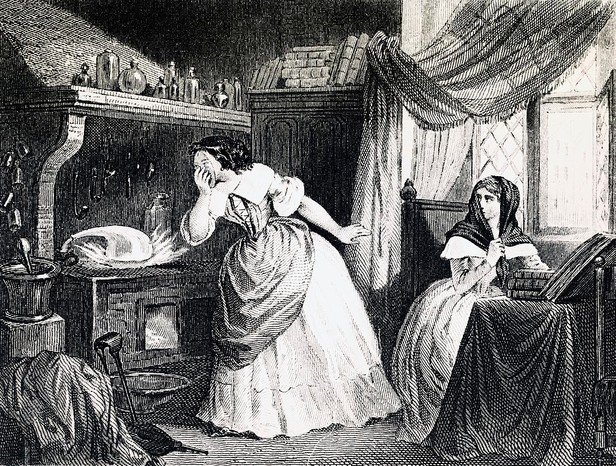
Secrets, Scandal and Conspiracy: the affair of the poisons
Written by Jem Snowdon, with edits from Hooked on Hedonism
Welcome readers, to our first guest post! Jem brings you a tale rich in murder and seduction in seventeenth-century France! So, if you want to know more about court gossip, love potions and conspiracy, then read on!
The Affair of the Poisons (1677 – 1682) was a major murder scandal in France during the reign of Louis XIV. Over the course of a vast inquiry, a large number of people, including many aristocrats and close associates of the king, were accused of murder, witchcraft and treason. Not only did this result in as many as thirty-four executions, and a great panic from the courtiers that they would be next to be killed, the affair itself, and its consequences, would leave their mark in French history for years to come…
The first whispers of the poisonings began in 1676, following the trial and execution of the Marquise de Brinvillers, the daughter of a high-ranking state official, and the wife of a wealthy nobleman.
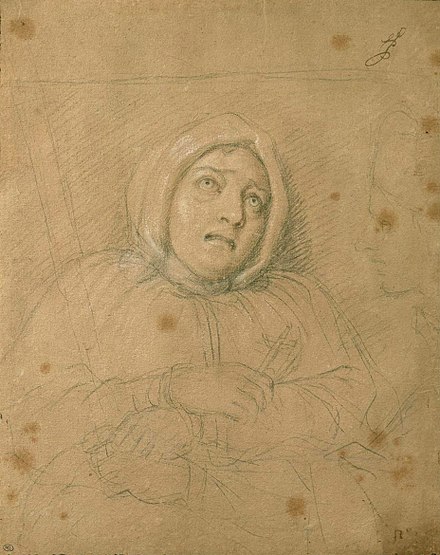
Together with her lover, Godin de Sainte-Croix, the Marquise was suspected of having killed her father and her two brothers in order to benefit from their inheritance, and to have tested the poison she used for their deaths on unsuspecting patients at a hospital. After Sainte-Croix’s death in 1672, nine letters were discovered containing incriminating correspondences between the two lovers, and vials, which were revealed to contain poisons that would leave no trace in their victim. With suspicions of foul play in the deaths becoming increasingly widespread, the Marquise fled to London, and in 1673 was condemned to death in absentia. She was ultimately found in a convent in the Netherlands in 1676, where amongst her possessions a series of letters were found, in which she confessed to her crimes, heavily contributing to the judgement of the court (despite denial of her involvement at her trial), she was condemned to torture and execution for her crimes. In July of the same year, the Marquise was decapitated with a sword, and her body was burned in public. However, the authorities were unconvinced that she could have acted alone, and became concerned that her involvement in such scandalous matters suggested that other nobles had similar criminal links and motivations. The king and many others of high rank worried that they too could be poisoned, and the lieutenant of police, Gabriel-Nicholas de la Reynie, opened an inquiry into the Marquise’s possible accomplices.
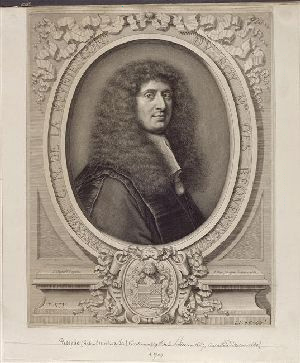
The affair is properly considered to have begun in February 1677, with the arrest of Magdelaine de la Grange for forgery and murder. Hoping to be able to save herself from execution, de la Grange appealed to the minister of war, the Marquis of Louvois, and claimed that she had information about other important crimes. He informed the king of the situation, who in turn informed la Reynie and exhorted him to find and deal with those implicated by this information. La Reynie, seeking to assure the king, then began an investigation into the matter, over the course of which links between la Grange and other known poisoners were established. The arrest of one especially notorious criminal, who was alleged to be poisoning people at the instigation of certain noblewomen, brought to the attention of the authorities the name of Catherine Monvoisin, née Deshayes. Better known by her notorious nickname “La Voisin”, Monvoisin had apparently turned to practices of fortune-telling and witchcraft to supplement her family’s income after the failure of her husband’s trade business.
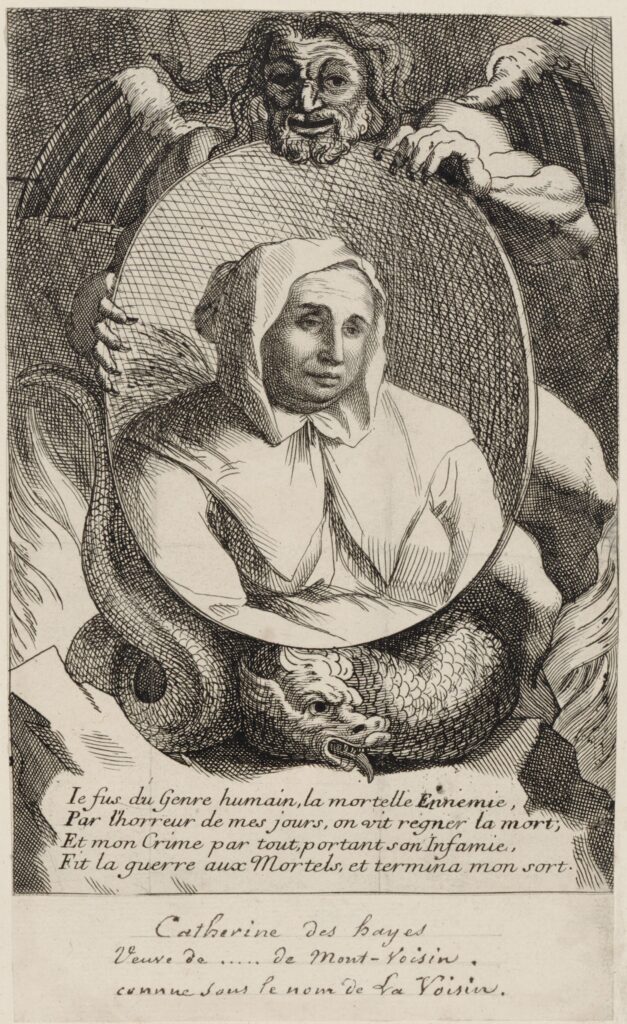
This practice had gradually evolved into providing aphrodisiacs and poisons to her clients, and had granted her wealth and fortune (pun intended!). Hence, on the 12th March 1679, she and some of her accomplices were arrested, and interrogated under the influence of alcohol and torture. Amongst them were a number involved in fortune-telling and witchcraft – but their confessions quickly demonstrated that their practices were more than just the work of the charlatans so common at the time.
Over the course of the inquiry, la Reynie discovered that there existed a staggering network of such criminals in Paris. This circle included poisoners, sorcerers, fortune-tellers, alchemists and people providing abortion; activities which were all illegal at the time in France. Most shocking of all was the revelation that many of those implicated in the sordid business were of the highest echelon of French society. La Voisin’s clients included countesses, duchesses, the Duke of Luxembourg, and two of the nieces of the King’s chief minister, Cardinal Mazarin. Concerns about the safety of the king and other members of the nobility subsequently exploded, and further arrests were made. At this time, La Reynie reestablished «La Chambre Ardente», or the “burning court”, in order to investigate the affair and judge those implicated in it. This court was composed of twelve high-ranking magistrates and had as its first task the judgement of La Voisin and her accomplices. The defendants, afraid for their lives, and in many cases under duress of torture, admitted to all sorts of crimes – despite a general lack of tangible proof to substantiate many of their confessions. Amongst the various reprehensible acts they admitted to, we see murders, the sale of poisons, the summoning of demons, the killing of children during black masses, and other equally shocking and disturbing things. Thinking that the magistrates would cover up the affair in order to protect the reputation of the nobility, and taking this as the final chance they were likely to have to save their own lives, those arrested denounced their famous clients.
The list of the incriminated was not only scandalous for the sheer number of those upon it, but because of the high rank – and, in many cases, closeness to the king – of the people found to be involved with such criminal practices. Two notable examples are the Countess of Soissons, and Eustache Dauger de Cavoye. The Countess of Soissons was one of the nieces of Cardinal Mazarin, chief minister during the minority of the king, and alleged to have been the former mistress of Louis himself. Eustache Dauger de Cavoye, meanwhile, had been the heir of a powerful noble family, but had been disinherited after having celebrated a black mass, after which he began selling poisons. His sudden disappearance after the scandal led to suspicions until recently that he may have been the Man in the Iron Mask. The implication of such notable figures, and the immensity of the hysteria that came about as a result, left Louis worried that the reputation of his court was falling into ruin. As a consequence, he advised voluntary exile to those worst-affected, and finally suspended the work of the Chambre Ardente in 1682. And there was another more personal reason for the king to wish to put a hasty end to the inquiry.
Documents of La Voisin’s made reference to a link between her and the Marquise de Montespan, the most celebrated mistress of the king, and the mother of seven of his illegitimate children.

Notwithstanding the paper trail, this information did not come to light until after the so-called sorceress had been burned alive in public for her crimes on the 22nd February 1680. After this, her daughter, Marie-Marguerite, contacted La Reynie, and informed him that her mother and Montespan had been implicated in certain crimes together. In reality, it’s unlikely that the Marquise did more than consult La Voisin for horoscopes. However, according to Marie-Marguerite, the two women had taken part in black masses together in order to maintain Louis’s affection – a ceremony which involved infant sacrifice – and had moreover used love potions to help Montespan win the love of the king. It was additionally alleged that La Voisin and the Marquise had planned to kill Louis together, together with his new mistress, the Duchess of Fontanges, going so far as to attempt to offer him a poisoned petition in 1679. From the time of the first allegations against his lover, Louis and his ministers reacted to protect her. Initially, he asked the magistrates to keep documents relating to her investigation separately in a sealed box, before ordering the halt of all inquiry into matters implicating Montespan. When the judges did not listen to this request, the work of the Chambre Ardente was suspended, and the affair hushed up as much as possible to avoid further scandal around the mistress of the king. Unfortunately, the severity of the case had already resulted in some magistrates losing their caution, and inflicting severe punishments on the guilty – especially those without powerful links in court – despite a frequent lack of tangible proof of any real wrongdoing. From the 10th April 1679 to the 21st July 1682, 442 people were accused and 367 were arrested, of whom 218 were held. A total of thirty-four people were executed, with a further two dying as a result of torture; five, meanwhile, were sent to the galleys, and twenty-three were sent into exile.
As for the consequences of the Affair of the Poisons over the long-term, there are two in particular which merit mentioning, one of which can truly be considered an incredible trick of fate. Firstly, in order to suppress the practices of poisoners, and to prevent similar problems from occurring in the future, Louis put out an edict. This made of poisoning specifically a capital crime in its own right, and also limited access to toxic substances such as arsenic, so that only apothecaries and doctors could use them. The king’s decree can be considered the precursor to similar modern legislation controlling the sale and purchase of poisons, and the first of its kind in Europe. Secondly, whilst the Countess of Soissons was one of those exiled as a result of the scandal, her son was not – and he was going to change the course of history. Originally destined to be a priest, François-Eugène de Savoie-Carignan sought permission to join the army from the king at the age of nineteen. However, due to the disgrace of his mother, which had left Louis uninclined to show any compassion to her children, he was rejected out of hand. Holding a grudge against Louis, he therefore made the decision to move from France to Austria in order to pursue his ambitions: where, finally, he became a military commander for the great enemy of France, the Holy Roman Empire. There known as “Prince Eugene of Savoy”, he enjoyed a military career spanning six decades in the service of three emperors. His exceptional skill both on the battlefield and in diplomacy, though disputed in his later years, was certainly one of the contributing factors in the failure of French attempts to establish political and martial hegemony in Europe over the following years.
If you loved this tale as much as we do, find more reading suggestions on the websites resource page!
The Academic Bit: my project proposal
I’ll admit it.
Although, in my biased opinion, this project is filled with out-of-the-box, exciting, and interesting to just about anyone who loves the history of how people had a good time and used it to their benefit, I am still unsure on how to make a project proposal sound un-academic and enjoyable to you, my reader.
So read it, or don’t – but here is my project proposal for the event, blog and the rest of the series. Hopefully you enjoy my proposal as much as the cartoon!

This proposal is structured as follows: supervisors, title, summary, research questions, methodology and sources, outputs, audience, and problems and solutions.
Supervisors:
My academic supervisor for this project is the lovely Professor Annie Tindley. My external supervisor, and parter, is Ruth Sheldon, the Project Coordinator of Public Engagement at the Great North Museum.
TITLE(s):
The project title – Hedonistic Histories: a comparative analysis of the hedonistic reproductions between life in seventeenth-century French court and nineteenth-century English country homes
The pilot event title – Taxidermy and Tipples
The blog title – Hooked on Hedonism
summary
This is a public history project which will take place as a series of events; the pilot event will be held at the Great North Museum. It focusses on hedonism in the social aspects of seventeenth-century French court life and nineteenth-century English elite culture. The proposed series of creative events will enable people to discover core elements of hedonistic cultures and the role pleasure played in society. For the purpose of this master’s project, the pilot event will be the main output for submission, but the brochure will evidence, through a variety of formats, the scope of this project as a series. The events created for this project will be activity focused, and maintain the narrative created within the research process, to determine the relationship between power dynamics and hedonistic cultural reproductions.
The research which has been conducted so far, is primarily drawn from the museum’s taxidermy collection, visual materials and literary novels. This methodology has been chosen as it provides a cultural lens through which the two comparatives can be analysed. To assist in creating a specific understanding of hedonistic tendencies in both societies, broader sources will be consulted to create a general understanding of pleasure-seeking tendencies. This will then be narrowed down, so that the two local histories can be compared, to evidence the cultural reproduction of hedonistic tendencies within the elite classes. These sources will be used in conjunction with cultural theories, which will evidence the hedonistic cultural reproductions.
This project’s interpretation of the seventeenth and nineteenth centuries are different from previous interpretations, as a new methodological approach is used to re-interpret pleasure-seeking themes under the all-encompassing term of hedonism. Existing historiography relating to pleasure-seeking has been studied in an isolated manner, using sub-tropes of hedonism, such as “elitism”, “etiquette” and “power”. Combining these themes, whilst investigating secondary literature on “politeness”, “sensibility”, “intemperance”, “high-living”, “profligacy” and “luxury” will assist an overall understanding of hedonism within both centuries, to prove this projects assertion: that hedonism is a culture of the elite, replicated through different time periods.
research Questions:
- Was hedonism performed as a symbol of power?
- How is hedonism defined? (use a present-day definition relating to pleasure-seeking, then assess in accordance to religion, culture and class of the respective periods, to understand the change in culture)
- To what extent were the hedonistic activities practiced in seventeenth-century France replicated in nineteenth-century England? (make reference to the limitations in a two-part comparison, and explain that future work would expand on this to include other elite cultures, demonstrating more evidence of hedonistic cultural reproductions)
- Was hedonism an activity exclusive to the aristocratic/elite class?
- Did hedonism exist beyond debauched activities? (this invites an exploration of architecture, theatre and dress)
Methodology and sources:
The aesthetics and philosophy of pleasure and indulgence will be investigated, to better understand the extent to which hedonism was practiced across elite societies. This will establish whether hedonism was the result, or aim, of extravagant aristocrat lifestyles, and their perusals of power. Once this cultural contextual narrative has been constructed, a diverse variety of sources will be evaluated, including: architecture, letters, chronicles, art work, literature and clothing. The purpose of this portfolio of sources is to uncover all references to luxury, pleasure and excess, and begin the creation of a hedonistic catalogue of resources. This will then be used to understand the cultural assimilations of power positions between elite cultures across time periods.
My overarching argument in this project is that hedonism needs to be considered within historical theory as its own trope, as there is a link between different forms of power through hedonism. Historian’s explore hedonistic themes in isolation from each other, which omits a detailed exploration of pleasure-seeking cultures. To analyse them in comparison with each other (luxury, excess, pleasure) would invite new interpretations of past historiography. The two comparatives in this project had very different expressions of power, yet they both performed hedonism to assert power through displays of wealth and leisure time. To successfully demonstrate this notion, I will establish the broad historical context, as it will provide me with contemporary vocabulary and a working knowledge of the cultural preoccupations of the age. This will help in reconciling and comparing these hedonistic expressions of power.
This project depends on a comparative approach to evince the assertion that hedonism is a culture of the elite, which is used to demonstrate power and position. This approach is valuable for this research project as it develops cross-cultural studies to identify and explain parallels or differences. Two comparatives could be a limiting factor to prove my argument, but due to the nature of this project, working within these parameters will ensure a more detailed analysis of both societies. It will also permit me to explain that further research is needed, and that this project has a legacy involving tangible outputs and future research potential.
The sources used in this project are multifaceted, ranging from objects, novels, films, and memoirs. Objects and visual sources will include taxidermy from the nineteenth-century, visual images of Versailles (both contemporary and historical), floorplans of Versailles and a portfolio of nineteenth-century country homes. Other sources include literature of the period, including Oscar Wilde’s The Picture of Dorian Gray (1890) and William Thackeray’s Vanity Fair (1847). Translated French novels will also be consulted, but the memoirs of Duc Saint Simon (1675-1755), the Versailles chronicler and courtier, will provide most of the literary basis for this point of comparison. The film rendition of Wilde’s novel will also be used for the film screening, as literature and film provide a narrative insight into a period’s morality and culture.
The theories used will be interdisciplinary, to encompass the sociological and cultural spectrum of this research. The primary theoretical influences used are Pierre Bourdieu on ‘distinction’ and Michel Foucault on ‘power-knowledge’. Their theories will be used symbiotically to elucidate on hedonistic habits and how they are performed and replicated across both societies. Bourdieu looks at the sociology and psychology of accumulating and posturing wealth.[1] His theory investigated the instrumental nature of reproductions and assimilations within cultural forms, values and practices, between cultures and generations.[2] This theory will be applied to my project, to determine that hedonistic activities were maintained between elite societies, ultimately proving that there is an elite hedonistic culture, which exists across nations and time periods. Foucault’s ‘power-knowledge’ theory invokes a cyclical relationship between authority and power.[3] His theory is applied to this project as it offers perspectives on authority and where power is ultimately held. The novels used in this project challenge the traditional notion that the leisure class held power, instead offering the nebulous title to performative rituals, etiquette, and hedonistic behaviours. Hence, Foucault’s theory is paramount in assessing these arguments. Other theorists will be referenced to reassert this argument, including Norbert Elias on civilisation, Thornstien Veblen on conspicuous consumption of the leisure class, and Antonio Gramsci on hegemony. The authority of the theories in this methodology lies in the reputation of these scholars and combining their theories to assess the assertion of this project. Bourdieu’s cultural reproduction theory frames this project, and is used to structure the theories and sources that are required to demonstrate hedonistic patterns within seventeenth-century France and nineteenth-century England.
As my ideas have been refined, I have developed a clearer sense of the types of primary sources that I would like to use. However, there are access issues with the sources, as well as issues which arise from the collaborative nature of this project, specifically with the objects. A repository of taxidermy objects has been selected by myself, then the museum staff will finalise which they will allow me to use. This is difficult as it delays the selection process, but forms part of the collaborative process. I have also encountered difficulty with the search terms I have used, such as “hedonism in Versailles”, as it is fairly specific. This has been overcome by broadening the search to a more general cultural context. There is primary and secondary literature on “luxury”, “politeness” and “sensibility”. In particular, there is a lot of scholarship on pleasure and luxury during the long eighteenth century, which has been useful in providing additional context between the two periods I am focussing on. My research has been conducted primarily through digital archives, as I am yet to visit physical archives. To date, I am using Historical Abstracts, as it covers over 2,300 history journals, alongside JSTOR and Google Scholar. I will also make use of the Bibliography of British and Irish History, as it includes book chapters. I have already consulted the Jisc Library Hub Discover, the Victoria and Albert Museum, and the British Library, but intend to do further research.
[1] Pierre Bourdieu, Distinction: A Social Critique of the Judgement of Taste, [New ed.]. (London: London: Routledge, 1986), 10.
[2] Ibid., 11.
[3] Barbara Townley, ‘Foucault, Power/Knowledge, and Its Relevance for Human Resource Management’, The Academy of Management Review 18, no. 3 (1993): 529.
OUTPUTS:
The outputs will be comprised of a pilot event, a project plan for five more events, a blog with project updates and an extended list of resources, and an article published in The Historical Associations magazine, The Historian.
The pilot event will be developed by myself, with support from Annie Tindley and the Tyne & Wear Archives & Museums. It will be held at the Great North Museum, entitled ‘Taxidermy and Tipples’. This will be an evening event which encompasses learning about taxidermy, through a lecture and object handling, whilst sampling some wines on the market today. We will use the museum handling collection and have staff expertise on John Hancock (1808-1890) and taxidermies. Reference will be made to decolonisation, ethics and repatriation of remains, plus the ethics of hunting for sport and the impact of British colonial hunting. Although taxidermy has an important role in scientific anatomical study, it also has a strong association with social power and status. Animals were preserved for the purpose of decoration in lavish and luxurious interiors and displayed as either a trophy of conquest, or source of whimsical amusement. Taxidermy’s initial purpose was educational but its cultural shift made them a hedonistic addition to country homes. This notion invites the comparison with seventeenth-century French court. Although they did not have taxidermies, they had other gaudy decorative elements which evidence a continuance in hedonistic cultures. This salient link will be presented at the pilot event through digital screens, presenting images and source materials of Versailles from the Versailles Digital Archives. A difficulty will be incorporating two historical periods in one exhibition, hence narrowing the hedonistic focus to architecture and interior design, as it allows for coherence within the exhibition. The project plan for future events will incorporate other themes, to create one overarching comparative hedonistic series, with events that are feasible in scale.
The project plan will evaluate the series of public events, looking at pleasure. In this series we will be exploring the sumptuous world of elite hedonistic cultures. Discovering how historic elites enjoyed themselves: from sex, to alcohol consumption, sport, and high arts. It covers a diverse range of rambunctious activities and principles. The brochure will outline the other events, who they are partnered with, what they will cost and how they will be funded. It includes: a lecture at the Literature and Philosophy Society to introduce the series and research findings, two film screenings at the Tyneside Cinema (The Picture of Dorian Gray, and A Little Chaos), an evening at the Laing Art Gallery (using their Rocco art), an evening wine tasting at Blackfriars restaurant, and a closing event at Seaton Deleval Hall, with the Time Bandits performing a historical re-enactment of significant period art pieces. The brochure will break down each event in detail.
The blog will be kept regularly up-to-date, to monitor the progress of this project. Any anniversaries or significant findings will be shared, to create engaging copy, and provide the project with a legacy. The brochure will be published to this blog, alongside all promotional materials created for the pilot event, educational resources, and a short video-graphic of the pilot event. The article will also be published on the blog, once it has been submitted and approved by The Historian’s editorial team.
audience:
The audience for this project will be varied, dependent on each of the events and the collaborators intended target audience. Each event will draw in a different public, which fits the aim of reaching a wide-ranging audience. Specifically, the museum typically draws in a 35+ audience, but they aim to reach a younger demographic with their evening events, so this pilot event will be targeted towards an 18-29 age group. Meanwhile, the article is written for an interested public, who are likely already subscribed to the magazine. This limits the reach to those who are already a part of the Historical Association, so it is likely focussed on academics. The other events, including the film screenings and historical re-enactments, are less academically driven, and will encourage a younger audience too, so this is also tailored to an interested public, of 18+.
problems and solutions:
The main problems encountered so far are maintaining the academic ambition behind this project, when it is being translated into an event for public engagement instead of a dissertation. This problem has been overcome by imagining it as a series, which provides a variety of outputs that assist in maintaining an overarching narrative, which can be interpreted by a wide audience as intended. ‘Taxidermy and Tipples’ has been structured as the pilot event, with an accompanying brochure of future events, as it demonstrates that there is a larger vision for this series than can be accomplished with the £200 budget, and short time frame.
Within the ‘Taxidermy and Tipples’ event, problems to consider involve drink handling around the objects. The solution to this issue is to hold the evening in two parts, so that the taxidermies on display are not at risk of damage. There are also costing issues: we need a wine supplier and relevant documentation to lead the session (food hygiene certificates, PLI insurance, allergies listed, and licensing issues with the catering team and Newcastle Council). This will all be applied for and obtained ahead of time. There is also a £200 charge for keeping the museums open after hours, which can be overcome by holding the event during the day to save the budget. There are also costs towards promotion for posters, but other promotional material is included by the museum in house communications team, who can upload material to the website and email their database. We also need to consider who will lead the wine sampling and supply the wine. Local businesses such as The French Quarter and Cavavin will be consulted for pricing, otherwise, wine can be bought from Aldi or Majestics, led by myself with information from my undergraduate dissertation on wine consumption in the nineteenth-century.
The article currently has no obvious problems, other than being published after the completion of this master’s project. This will be overcome with evidence of the article being written through the blog, alongside email correspondence and confirmation that it will be published. The limitation of this article arises from its ‘coffee table’ style, which limits the amount of references that I am able to use to six. This will be a challenge as my work is heavily evidenced by sources and theories, so it is likely to turn into an opinion piece, rather than an academic article.
Hooked on Hedonism: an introduction to what makes life great
Have you ever thought about how a life of leisure would be more enthralling than your 9 to 5 butt busting job?
You are not alone.

Generations of leaders, from sovereigns to socialites, have performed pleasure to consolidate their power. It was a form or work, but they had a hell of a lot of fun whilst doing it.
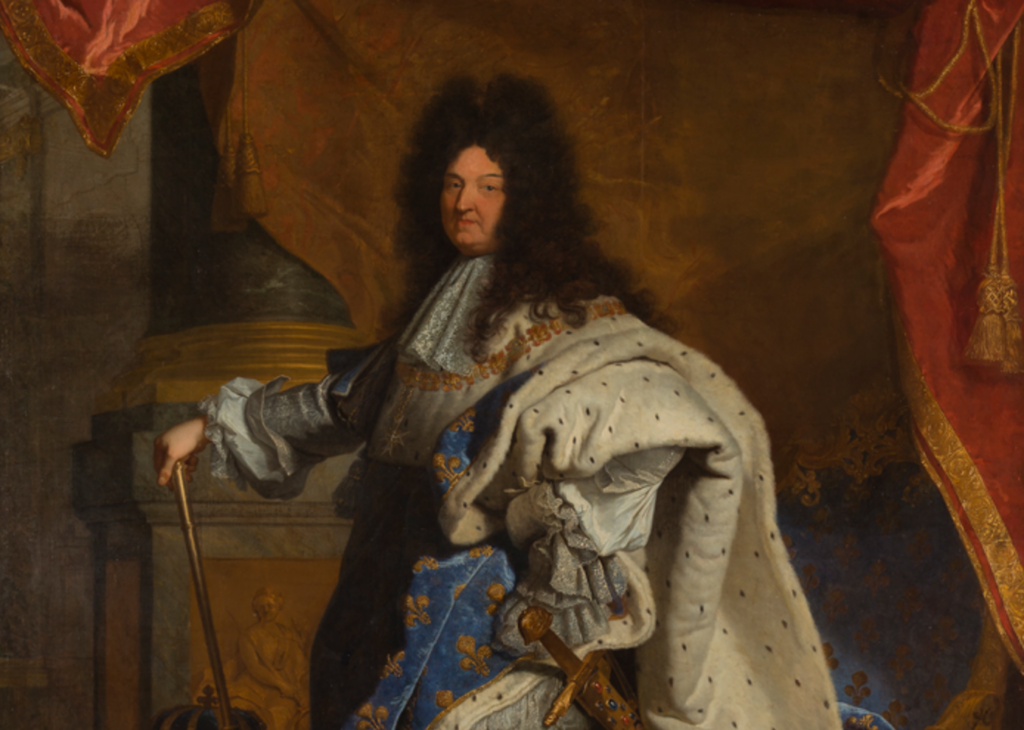
This blog forms part of my master’s project, which explores the history of hedonism and how societies have culturally reproduced hedonistic tendencies to strengthen their status.
I won’t bore you senseless with lots of dates, articles and inaccessible academic jargon! Expect to be amused, interested and captivated by debauchery, decadence and intemperance.
If these themes sound like something you enjoy or care to know more about, then you are in the right place. This blog informs on the history of hedonism in two vastly different societies: one of splendour and superiority, and another of veniality and Victorian morality.
Follow this blog and the projects Instagram page for regular updates on the progress of the ‘Hedonistic Histories’ event. Join to enjoy the shared resources of interest and relevance to the project. Read links to other sites, listen to podcasts and learn about the history of hedonism. All of which are bursting with delicious details of scandalous pasts.
If you are still interested by what you have read, then familiarise yourself with the ‘Hedonistic Histories’ section of the website to learn more about the project, the event, and the resources.
And finally, welcome to ‘Hooked on Hedonism’, a blog which will satiate your pleasure-seeking tendencies!
Now, that’s the ‘why you should read my blog’ part over. The next post will share the nitty gritty explanation on what this project is all about, and what the blog part does to help. Enjoy!

